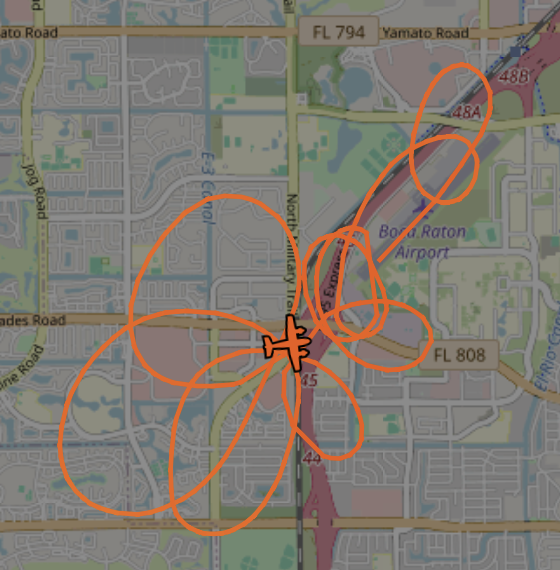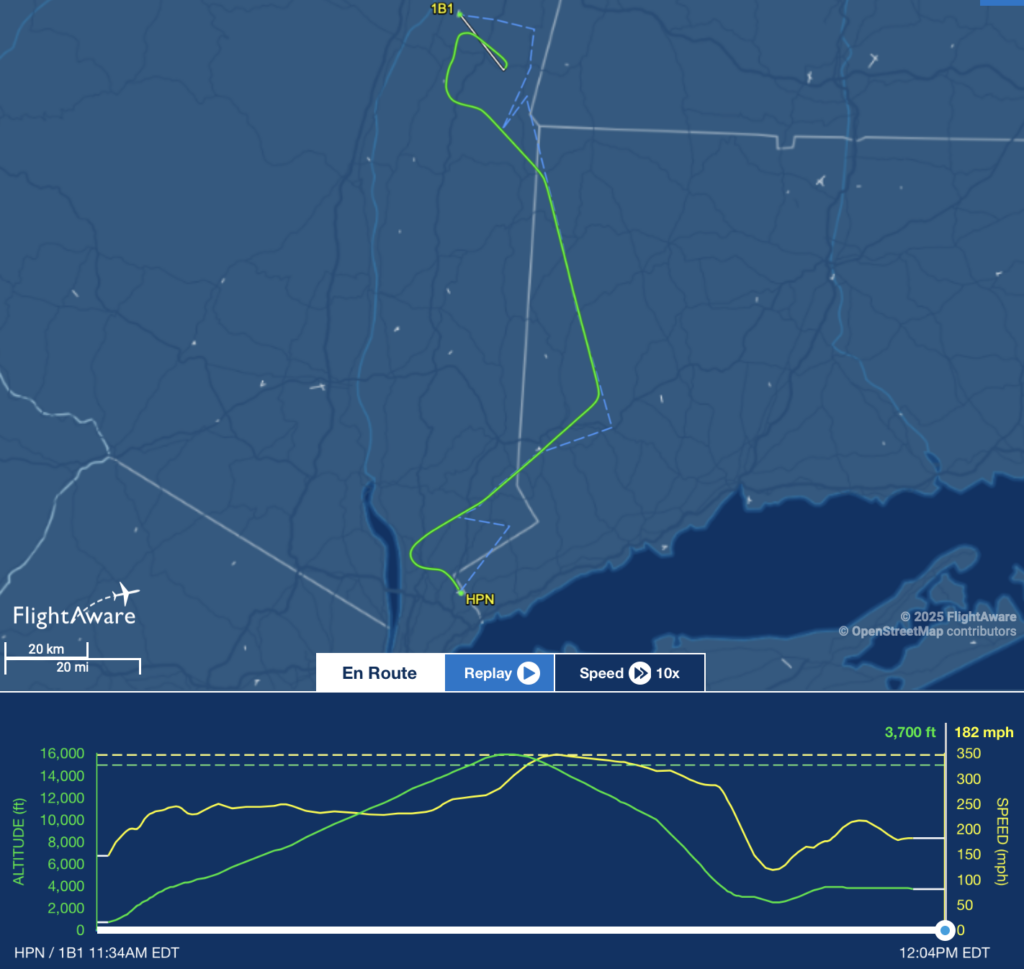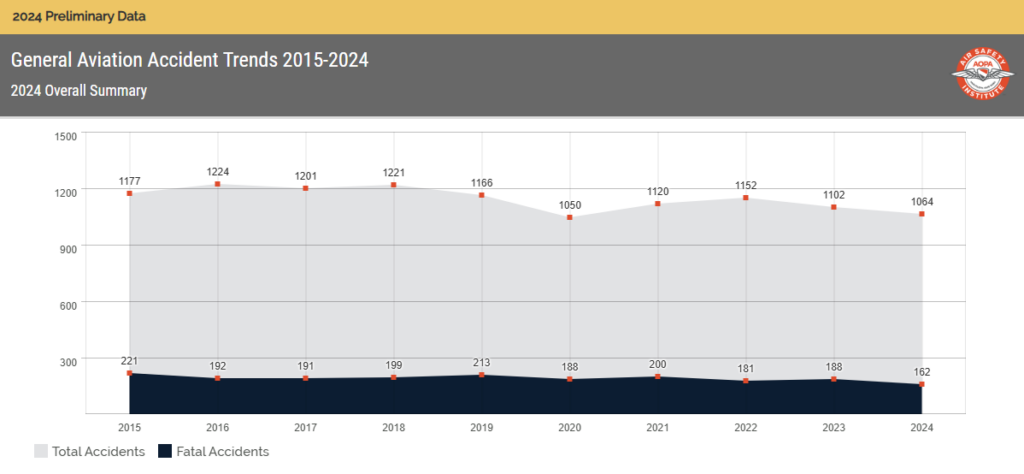Topics this week include: > A fatal trend? > Continual training > Success story

FLYING LESSONS uses recent mishap reports to consider what might have contributed to accidents, so you can make better decisions if you face similar circumstances. In most cases design characteristics of a specific airplane have little direct bearing on the possible causes of aircraft accidents—but knowing how your airplane’s systems respond can make the difference in your success as the scenario unfolds. So apply these FLYING LESSONS to the specific airplane you fly. Verify all technical information before applying it to your aircraft or operation, with manufacturers’ data and recommendations taking precedence. You are pilot in command and are ultimately responsible for the decisions you make.
FLYING LESSONS is an independent product of MASTERY FLIGHT TRAINING, INC.
Pursue Mastery of Flight™
This week’s LESSONS
Six died when a sightseeing helicopter carrying a family of five broke up in flight and plunged into the Hudson River. There’s discussion of mast bumping and NTSB is investigating the inflight separation of the engine transmission and main rotor system. Here’s a YouTube video that reviews the facts as they were known at the time the video was recorded, shortly after the crash. The video creator doesn’t try to infer too much from the limited information available—although he does speculate briefly about causes—but he explains what the radio calls mean for someone not familiar with ATC procedures or the aviation safety record. The value of this particular video, in my view, is that includes the ATC audio.
No doubt there is much to be discovered during the investigation, and LESSONS to learn once the investigation is done.
All three aboard a Cessna 310R were killed when it crashed onto a road in Boca Raton, Florida. The aircraft was totally destroyed. The Aviation Safety Network (ASN) reports:
ADS-B data suggest that the aircraft took off from runway 05 at Boca Raton Airport, FL (KBCT) at 10:12 [local time]. After becoming airborne, the aircraft began flying a series of left-hand turns in the vicinity of the airport at varying altitudes. The aircraft crashed bout 3500 feet to the south-west of the threshold of runway 05, about 11 minutes after takeoff.
The Cessna twin’s flight track –eight left-hand circles, all at 500 feet above ground level or less—suggests a wild ride: radio calls from the pilot report a stuck rudder and video showing a jammed, fully deflected rudder. One unverified report is that:

…the pilot reported that his rudder was stuck fully deflected to the left and he could only turn left. when he got slow enough to land the plane would go straight. Pilot was an accomplished aerobatic pilot.
A YouTube video traces the video with commentary. There’ll undoubtedly be LESSONS from the facts that emerge here as well.
A family of six aboard an MU-2 perished when, according to the ASN:
The NTSB reported that the aircraft crashed at a high rate of descent in a flat agricultural field following a missed approach to Columbia County Airport (1B1), Hudson, New York.

Weather may have been a factor, with low clouds and icing conditions near the surface reported at the time of the crash. The Flightaware track and altitude log shows a quick climb to 16,000 feet then a descent for the approach…possibly a low, visual approach or a circling approach before altitude went down as speed went up…until impact.
More details are available in this YouTube video, which focuses on the publicly available factual evidence. Here, too, are LESSONS waiting to be learned.
I was struggling with what to write in this week’s LESSONS, with all these fatalities in so short a time…plus two in a Cessna T210 in Louisiana, the solo pilot of a Cassutt III in Oklahoma, an Aeronca Champ pilot in Missouri (whose passenger suffered “serious” injuries), the Texas pilot of a Saberwing, and two aboard a Mooney in Tennessee—eight fatal accidents and 22 dead in the last two weeks.
The most recent AOPA ASI Richard McSpadden Report reveals 162 fatal general aviation crashes in all of 2024 (preliminary data, but that number shouldn’t change). I know the last two weeks have been an anomaly. But if it were indicative of a consistent trend there would be 208 fatal accidents in 2025…28% more than the 2024 rate.

Fatal accidents of all sorts, including airlines, have been widely reported this year. Preliminary 2025 data suggest the total number of aircraft accidents this year is actually lower than last. But is the number of fatal accidents trending upward?
So with all this tragedy, what do I write? What LESSONS can we learn? Suddenly I had the opportunity to choose a different accident as our focus this week:
The pilot and his passenger were taking off in an A36 Bonanza. Here are the initial facts from the FAA preliminary report:
AIRCRAFT DEPARTED AND CRASHED IN A FIELD DUE TO ENGINE ISSUES.
The FAA notes that the pilot was unhurt and the passenger suffered “minor” injuries. Airplane damage, according to the FAA’s initial report, is “minor.”
Here’s what the Aviation Safety Network reports:
A Beechcraft A36 Bonanza sustained substantial damage following a forced landing…. The pilot was not injured, and [the] passenger sustained minor injuries.
Preliminary information indicates that the airplane departed runway 26…and climbed to an altitude of 2000 ft when it experienced a loss of engine power. The pilot conducted a 180 turn and attempted to land back on runway 8, but ended up landing in a field roughly 1.6 miles from the approach end of runway 8.
While I stewed over what to write this week I received a phone call that changed the direction of this edition of Mastery of Flight™. A FLYING LESSONS reader called to thank the organization for which I work, the American Bonanza Society, and me personally (Mastery Flight Training, Inc., being my personal, after-hours craft), for helping save his wife’s life, and his. He was the pilot of that A36, and described his experience (paraphrased from my notes taken during the call):
I have a turbonormalized A36. Everything looked normal during the takeoff roll. It was the first flight of the day and the oil was cool, so manifold pressure was about 33 inches as I expected.
A turbonormalizer is a conventional turbocharger rigged so it develops sea level manifold pressure to a high altitude. The “normal” in turbonormalization is about 30 inches of manifold pressure at full throttle, what is standard at sea level in non-turbocharged engines (conventional turbocharging boosts pressure the higher than is natural at sea level). Like many turbocharging systems, turbonormalizer output is automatically controlled by a wastegate system that itself is controlled by oil pressure—more oil pressure creates more manifold pressure and vice versa. When oil is cool the oil pressure is higher than normal, so it’s not unusual for a little extra manifold pressure on the first takeoff of the day until engine heat raises the oil temperature. Ten percent extra manifold pressure as reported by the caller is a bit much, but again, it’s not outside of expectations in this type of modification under these conditions.
The reader continued (again, paraphrased from my notes):
Climbing away from the airport the airplane felt sluggish. I looked down and the manifold pressure was down to 27 inches—not good. I started a turn back toward the airport and suddenly it sounded like two rapid shotgun blasts in the cockpit: Bang! Bang! We later found two large holes in the crankcase. I knew power was gone and there was no chance of a restart.
My training kicked in and I knew from what you’ve written that getting back to the runway wasn’t going to happen. I have taken all the ABS online classes and flown with your instructors. I read everything you write and everything on your [Mastery of Flight™] website. I pushed the nose down for airspeed and looked for a place to put it down.
There were three fields in range. One was surrounded by trees and wasn’t going to work. I chose the third as the best option. I lined up, wings level. Thank goodness this is a 28-volt airplane [which means its landing gear extends in about 4.5 seconds –tt]. I put the gear down just before touchdown. But we’ve had a lot of rain the last several days and the ground was muddy. As soon as the main gear touched it dug in. Then the nose gear collapsed. We stopped in about 150 feet. My wife’s injuries are from where the shoulder harness kept her safe.
The reader said he has a friend who is a former Naval aviator and who “flies Falcon jets around the world” with whom he flies “every month or so” to practice approaches and other things to keep his skills sharp. He credits this, along with the training he has taken and the reading he continues to do as part of his habit of “continual training” that made him ready when he and his wife needed him to be.
There’s evidence to support that best results come from keeping the landing gear up for off-airport landings—it allows a smoother slide-on without the hazard of being slammed forward if the nose gear collapses, or in a worst case, the airplane cartwheeling. Gear up is my standard procedure for an off-airport landing.
But you can’t argue with success: a catastrophic engine failure close to the ground in which the pilot maintains control all the way to touchdown on what may have been the best surface available, and the worst that happens is bruising from seat belts and shoulder harnesses. Well done, reader.
I will likely focus on one or more of the three tragedies above (not to dismiss the others) once more information is publicly available. But despite their severity, at least in some cases success is possible. I’m glad we had the opportunity to learn from success this week—accidents are far better documented and survivor stories are hard to find. It’s a great reminder that, as written by the 7th century BCE lyric poet (an early term for historian) Archilochus:
“We don’t rise to the level of our expectations, we fall to the level of our training.”
Readers, be ready for your personal success story with a habit of continual training.
Thank you, reader, for your call, for crediting my work (day and night) as part of your successful life-saving response, for reinforcing that success is possible, and for making this week’s LESSONS easy to write.
Questions? Comments? Supportable opinions? Let us know at [email protected].


Please help cover the ongoing costs of providing FLYING LESSONS through this secure PayPal donations link. Or send a check made out to Mastery Flight Training, Inc. at 247 Tiffany Street, Rose Hill, Kansas USA 67133. Thank you, generous supporters.
“[My donation is] long overdue support for you and your incredible work. Thanks as always for providing the best continuing General Aviation education in the industry.”
– Andrew Urban, Sun River, Wisconsin
Thank you, Andy, for your continued contributions toward the costs of hosting and delivering Mastery of Flight.TM And thank you to all these FLYING LESSONS readers:
Thank you to our regular monthly financial contributors:
Steven Bernstein, Montclair, NJ. Robert Carhart, Jr., Odentown, MD. Greg Cohen, Gaithersburg, MD. John Collins, Martinsburg, WV. Dan Drew. Rob Finfrock, Rio Rancho, NM. Norman Gallagher. Bill Griffith, Indianapolis, IN. Steven Hefner, Corinth, MS; Ellen Herr, Ft Myers, FL. Erik Hoel, Redlands, CA. Ron Horton. David Karalunas, Anchorage, AK. Steve Kelly, Appleton, WI. Karl Kleiderer. Greg Long, Johnston, IA. Rick Lugash, Los Angeles, CA. Richard McCraw, Hinesburg, VT. David Ovad, Resiertown, MD. Steven Oxholm, Portsmouth, NH. Brian Schiff, Keller, TX. Paul Sergeant, Allen, TX. Paul Uhlig, Wichita, KS. Richard Whitney, Warrenton, VA. Jim Preston, Alexandria, VA. Johannes Ascherl, Munich, Germany. Bruce Dickerson, Asheville, NC. Edmund Braly, Norman, OK. Steven Hefner. Lorne Sheren, New Vernon, NJ. “The Proficient Pilot,” Keller, TX. Ed Stack, Prospect Heights, IL. Kynan Sturgiss, Hereford, TX. Bluegrass Rental Properties, LLC, London, KY. John Foster. Joseph Victor, Bellevue, WA. Chris Palmer, Irvine, CA. Barry Warner, Yakima, WA. Todd LeClair, Cadiz, KY
Thanks also to these donors in 2025:
John Teipen. N. Wendell Todd. David Peterson. Jay Apt. SABRIS Aviation/Dave Dewhirst. Gilbert Buettner. David Larsen, Peter Baron, Glen Yeldezian, Charles Waldrop, Ian O’Connell, Mark Sletten, Lucius Fleuchaus. Thomas Jaszewski. Lauren McGavran. Bruce Jacobsen, Leroy Atkins, Coyle Schwab, Michael Morrow, Lew Gage, Panatech Computer (Henry Fiorentini), John Whitehead, Andy Urban, Wayne Colburn, Stu Spindel, Dave Buetow, Ken Vernmar
Pursue Mastery of FlightTM
Thomas P. Turner, M.S. Aviation Safety
Flight Instructor Hall of Fame Inductee
2021 Jack Eggspuehler Service Award winner
2010 National FAA Safety Team Representative of the Year
2008 FAA Central Region CFI of the Year
FLYING LESSONS is ©2025 Mastery Flight Training, Inc. For more information see www.thomaspturner.com. For reprint permission or other questions contact [email protected].

